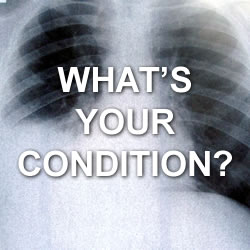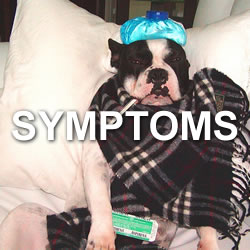Marine Envenomations
Most marine envenomations involve heat-labile venom. Hot water immersion is likely to help reduce local symptoms - Justin Seltzer MD
.jpg)
image by: Word Bites
HWN Recommends
First Aid for Marine Animal Bites, Stings, Punctures
By no means is the information here supposed to be considered THE LAW...
Whew!!, Now that we got that out of the way lets cover the animals that could give you a bite, sting, or puncture wound! First the BITERS: These would include the Shark, Barracuda, Moray Eels & their cousins, and just for the sake that they do live in the Keys: Alligators & Crocodiles. All of these animals can deliver quite a nasty bite ranging from just a nip to full on Critical Situation!!!
First and foremost get the victim out of the water. Second, keep the victim calm and still. Third, STOP THE BLEEDING with pressure to the wound…
Resources
 5-Step Approach to Marine Envenomations
5-Step Approach to Marine Envenomations
While there are hundreds of unique venomous fish species, 5 simple steps will help you treat most patients presenting with acute marine envenomation.
 EM@3AM: Marine Animal Bites and Stings
EM@3AM: Marine Animal Bites and Stings
Envenomations can be broken down into three classes based on mechanism of delivery: stingers, nematocysts and bites.
 Emergen-Sea Medicine Part 2: Overview of Marine Envenomations
Emergen-Sea Medicine Part 2: Overview of Marine Envenomations
In Part 1 of our two-part series on marine envenomations, we reviewed some general information on wound care, antibiotic use, antivenom, and explored some species-specific management. In Part 2, we continue to review species-specific management.
 Emergen-Sea Medicine: Overview of Marine Envenomations
Emergen-Sea Medicine: Overview of Marine Envenomations
Yes, the vast majority of marine envenomations are completely benign in terms of long-term morbidity and mortality...
Box Jellyfish -- Deadly Venom
Their heart-stopping venom is considered the deadliest in all the oceans, acting instantly to paralyze the heart and nervous system. The Box have caused more loss of human life in the past 50 years than shark bites, many of their victims dying before making it to shore.
Here is Why You Should Never Touch Marine Life
Both animals and plants underwater possess many defense mechanisms, they have to otherwise they would be something else's dinner. That is why you should not touch marine life.
Poisoning, Envenomation, and Trauma from Marine Creatures
Marine medicine is still relatively new, so treatment recommendations for these conditions are largely based on case reports and expert opinion, with few randomized controlled studies available to guide management.
Sea creature bites and stings
It can be difficult to know if a bite or sting from a sea creature is dangerous or not. This article explains the best first aid treatment depending on the creature involved.
Surfer Dude Health Hazards -- Just When You Thought It Was Safe To...
Besides sharks, the ocean has plenty of critters that can be hazardous to a surfer's health. Top among them are coelenterates, which are animals like jellyfish and stingrays that have dangling tentacles with venom-filled cells that inject toxins in response to chemical or mechanical stimuli.
The Claim: Vinegar Can Remedy Jellyfish Stings
Nothing can ruin a day at the beach like a jellyfish sting. And while such attacks are common, the methods for treating them vary, and many remedies can do more harm than good.
Toxic and Stinging Sea Creatures
The seas are home to some of the planet’s most toxic creatures. Go ahead and take a good look—but don’t touch.
Lionfish, Scorpionfish, and Stonefish Toxicity
More than 50 percent of all venomous vertebrates are fish, and which pose a threat to divers around the world. The family Scorpaenidae includes the most venomous fish. Lionfish, scorpionfish, and stonefish are members of this family. All of these fish possess spines on their dorsal, pelvic, and anal fins.
Marine Envenomations
Of the vertebrates, stingrays and spiny fish are of primary concern.
A Pain in the Wrist: Stingray Envenomation
Since the venom is heat sensitive, immediate management includes irrigation and soaking the wound in hot water (110 to 115°F) for 30 to 90 minutes to inactivate the protein.1 A radiograph should be obtained of the area to evaluate for embedded spines.
A Pitbull of the marine ecosystem, or just misunderstood?
Emergency Medicine is vast. Like a New York foodie on a restaurant binge, you could eat out every night and never come close to encompassing it all. One of the techniques I’ve learned over time to accommodate this gluttony of knowledge is to find general principles that I can apply across a wide range of clinical presentations–ones that I can fall back on say when starting work in a new geographic location with unfamiliar local disease entities. Take my first Moray Eel bite for example...
AM Guide to Marine Envenomation
The point of the story is that more often than not, when somebody suffers an insult in the water we do not know what caused the problem. Sometimes we can make a pretty good guess based on geographical location and the context of the injury. Of course, it is sometimes evident what caused the injury: a sea snake caught in a fishing net, a cone shell picked up by someone unaware as to its potential, or an accidental brush with the spines of a sea urchin. But, given that this topic is not well covered at medical school, even knowing what did it might not help much.
First Aid for Hazardous Marine Life Injuries
As you travel and enjoy aquatic environments, you may have the opportunity to observe and interact with marine life. While injuries are rare and usually prompted by human action, we nevertheless face the risk of stings, bites or cuts from marine life any time we enter the water or even walk on the beach. In most cases, injuries are mild and require only simple first aid.
Identification and Management of Marine Envenomations in Pediatric Patients
While most marine envenomations are mild, systemic and life-threatening reactions, as well as delayed presentations, can occur. The pediatric population is at greater risk for serious reactions to marine envenomations. Although the majority of the literature on marine envenomations is of low quality, the available literature suggests that management varies depending on the geographic location.
Is hot water immersion an effective treatment for marine envenomation?
The use of heat therapies, previously reserved for penetrating fish spine injuries, has been suggested as treatment for an increasing variety of marine envenomation. This paper reviews the evidence for the effectiveness of hot water immersion (HWI) and other heat therapies in the management of patients presenting with pain due to marine envenomation.
Jellyfish Envenomation
Alcohol, urine, or sand are NOT good options (so don’t pee on your friend!). Household vinegar (4-6% acetic acid) has been widely used.
Marine Envenomations
Two notable exceptions are the box jellyfish and the Irukandji jellyfish, found in the Indo-Pacific. The box jellyfish is colloquially known as the most venomous marine animal on earth, causing death through rapid hypotension and cardiovascular collapse. An antivenin is available through regional poison centers, and one 20,000 unit vial intravenous (IV) should be the initial therapy in cases of cardiogenic shock or cardiac arrest.
Venomous Creatures: Stonefish and Lionfish Envenomation
Scorpionfish are a family of fish that sting victims with sharp spines covered in venom. Venom glands, located at the base of the spine, inject venom once the spines are embedded in the victim. While the location and composition of venom vary by species, all scorpionfish envenomations cause extremely painful wounds, and in rare cases, can cause systemic symptoms. Although hundreds of species exist, the most commonly encountered scorpionfish that cause human injury are stonefish and lionfish.
Why Fatal Sea Snake Bites Are Unusual
Sea snakes are commonly found in tropical and sub-tropical waters of southeast Asia, the western Pacific Ocean, and northern Australia. There are 70 known species, 30 of which exist in Australian waters.
 First Aid for Marine Animal Bites, Stings, Punctures
First Aid for Marine Animal Bites, Stings, Punctures
FIRST AID should be as follows for Puncture Wound Type Stings: First, wear gloves to remove any part of the Stinger/Spine left in the wound and rinse with SEAWATER! Second, soak affected site in HOT WATER for 20-30 minutes at 110-114 degrees Fahren- heat breaks down venom and relieves pain!
WikiSM
Marine venoms are generally contain heat labile proteins which quickly denature with hot water.

Introducing Stitches!
Your Path to Meaningful Connections in the World of Health and Medicine
Connect, Collaborate, and Engage!
Coming Soon - Stitches, the innovative chat app from the creators of HWN. Join meaningful conversations on health and medical topics. Share text, images, and videos seamlessly. Connect directly within HWN's topic pages and articles.













